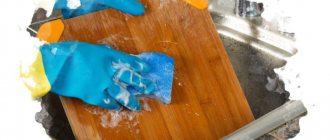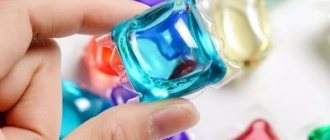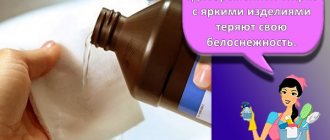Chromidrosis is a rather rare type of disease of the apocrine sweat glands. Simply put, this is colored sweat, which most often comes along with excess release of natural moisture. Why does the skin in one area or another suddenly take on an unusual color, is it worth panicking, and how can you get rid of it?
IT IS IMPORTANT TO KNOW! Even “advanced” hyperhidrosis can be cured at home, without surgery or hospitals. Just read what Svetlana Shumskaya says and read the recommendation.
"Real" and not
Doctors distinguish two forms of this disease
THIS IS REALLY IMPORTANT! Cheap product No. 1 against profuse sweat. Dry armpits will thank you, once a day is enough. FIND OUT >>
- Pseudochromidrosis (false). It is characterized by the secretion of colorless, ordinary sweat, which acquires color directly on the surface of the skin. Similar symptoms often occur in employees of enterprises whose occupations come into contact with certain metals and chemicals. As a rule, colored moisture is released in local areas. Its “shade” depends on what substance a person comes into daily contact with. So, greenish appears “thanks to” copper and brass; cyan (blue) - methylene blue (it is, in particular, used for dyeing cotton and wool); Potassium permanganate gives red sweat (the chemical industry uses it as an oxidizing agent). False chromidrosis can also be caused by corynebacteria - gram-positive microorganisms that “live” on the skin and armpit hair. Usually they “give” golden-red, golden-brown, black colors. Dyes from clothing can also cause the unique color of sweat.
- True chromidrosis. Rarely observed. In medicine, cases of sweat of yellow, blue, green, black, and violet are described. This condition is associated with taking certain medications, dyes, and vitamins. Thus, “blueness” is often associated with gastrointestinal diseases, phosphates and ferric oxide that have entered the body. “Yellowness” occurs due to malfunctions of the kidneys - urea comes out through the skin.
Note. The appearance of chromium drosis is often caused by insufficient hygiene procedures due to hypersweating, which is why bacteria and fungi multiply intensively on the skin.
Symptoms
The manifestation of the disease can be noticed by paying attention to the initial signals of one’s own body. Chromidrosis in almost every case is accompanied by hyperhidrosis - an increased process of sweating even under natural normal conditions of the surrounding world. If a person sweats indoors as if he were on the beach, then this condition can be considered hyperhidrosis.
The minimal presence of colored impurities during sweating is the initial symptomatology of this disease. But it is necessary to distinguish the true form of the disease from the false one. Sometimes sweat takes on a certain color due to interaction with low-quality clothing fabric.
With the true nature of the disease, staining occurs due to the excessive proliferation of microflora, which may be accompanied by other symptoms. Chromidrosis often acts as a concomitant symptom of another disease, less often it is isolated as a separate disease.
Get a diagnosis
Typically, patients go to the dermatologist, constantly encountering colored spots on clothing where it touches the body. Sometimes localized areas of the skin also acquire a frightening, abnormal color.
THIS IS REALLY IMPORTANT! Right now you can find out a cheap way to get rid of heavy sweat. FIND OUT >>
Chromohidrosis is diagnosed and its causes are sought using:
- taking anamnesis;
- bacterial culture, fungal culture, determination of the amount of microflora;
- lumen diagnostics (illumination of individual zones with ultraviolet rays of a certain wavelength);
- blood, urine, sweat tests;
- cardiograms and ultrasound examination of certain organs (if necessary).
In addition, the doctor may suggest checking the source of drinking water, through which substances may be released that are released along with sweat and “color” it.
Caring for colored items
You need to be more careful with colored fabrics. To eliminate yellow spots under the arms, you should carefully study the composition of stain removers and do not use bleaches. Most effective:
- use a composition containing oxygen and enzyme
- remove fresh stains with table salt diluted in water to a paste with shavings of laundry soap
- mix 10 g of denatured alcohol with egg yolk and apply to old sweat and grease stains, keep until completely dry, wash only in cool water
- aspirin plus peroxide will save you from the most difficult traces of sweat
There can be much more problems with colored clothes than with white ones, due to possible loss of color. The main rule remains - wash in cool water.
Causes of chromidrosis (chromohidrosis)
Chromidrosis is a phenomenon in which yellow sweat begins to accumulate in the armpits. On clothes with white sleeves, yellow sweat stains stand out especially brightly. This causes discomfort. You need to know the causes of yellow sweat under the arms before you start fighting it.
The reasons for this pathology can be different:
- a defect in the structure of the sweat glands, in which they begin to produce lipofuscin, which gives sweat a different color;
- colored sweating occurs in environmentally unfavorable areas, in people who have contact with harmful chemical compounds - in this case, the sweat can be not only yellow, but also blue or even red;
- insufficient hygiene, which leads to the activity of fungi and bacteria - these parasites produce a special substance - chromogen, which, in contact with air, turns yellow, and an unpleasant, pungent odor appears.
If the cause of increased sweating is a person’s professional activity, they speak of false chromidrosis. Contact with chemicals such as cobalt and copper can cause sweat to turn brown. The same explanation for blue and brown sweat. Such phenomena are very rare, but not excluded.
Sometimes increased sweating is accompanied by the formation of yellow small crystals in the armpits; they contain urea. This phenomenon is typical for exacerbation of nephritis, and may appear with uremia.
Yellow sweat may indicate congestion in the gallbladder. The reason for the color change in this case is the concentration of bilirubin.
Chromohidrosis is a fairly rare phenomenon: out of a hundred people who experience excessive sweating, only two have colored sweat.
Prohibited means
If you take on the task of removing yellow sweat stains, you can easily ruin the item; all you need to do is use the wrong ingredients. We must remember that the following measures to influence traces of sweat are prohibited:
- washing and bleaching with chlorine or chlorine-containing substances. Only oxygen-containing products can give results without reacting with proteins in sweat. Chlorine bleach can cause stains to become darker and almost impossible to remove.
- Using hot water when washing, boiling water is especially harmful. When removing sweat stains, the optimal temperature is up to 30C. Washing in hot water will cause the proteins inside the fabric fibers to coagulate and the stain will turn gray.
- the use of vinegar or acetone in the process of washing or soaking artificial silk and fabrics that require careful handling will lead to the destruction of their structure
- the use of derivatives from petroleum products (gasoline, kerosene) will spoil products made from synthetic fibers
- washing cotton and linen with an acid-containing composition
- using an alkaline mixture when working with wool
It is strictly forbidden to use acetone in the process of removing yellow stains under the arms on colored clothing. It is capable of dissolving the most resistant paints and an indelible blurred stain will appear in place of traces of sweat.
Diagnostic procedures
To eliminate sweating, you need to find out the cause of its occurrence. Chromidrosis is determined by the results of the following types of diagnostics:
- bacterial culture;
- scraping for fungal diseases;
- luminescent study.
If the disease has caused discomfort, it is necessary to begin taking appropriate measures to get rid of it. But first of all, you should consult a specialist.
A dermatologist or trichologist will help solve the problem of the formation of yellow sweat.
How to remove yellow stains under armpits on clothes?
Method 1
- Preparing for removal. Select your desired stain removal option. There are several ways to get rid of yellow spots. When choosing an option, you can proceed both from the reviews of friends and the availability of the necessary product in your closet.
Select one of the following tools, and then proceed to the appropriate points in the article:
- Baking soda (sodium bicarbonate)
- OxiClean (baking soda and hydrogen peroxide)
- Vodka
- Dishwashing liquid
- White vinegar
- Crushed aspirin
- Pre-wet the stain with cold or warm water. Wet the stain thoroughly - pour water on the fabric or use a damp sponge.
- Typically, the stain is caused by a reaction between sweat and aluminum, which is found in most deodorants and antiperspirants. Protein, which is part of sweat, combines with aluminum to form a yellow spot. Since the stain contains protein, immediate contact with hot water will eat the stain into the fabric.
- However, hot water is best for removing stains. After you have wetted your clothes with cold water and applied the necessary product, it is recommended to wash the item in hot water to wash away any remaining dirt.
- Mix water and detergent in a separate container. It doesn't matter which of the above products you decide to use, as the cleaner must be mixed with warm water to activate it. The proportions and mixing conditions for all products are described below.
- OxiClean, vodka, hydrogen peroxide, white vinegar and dish soap should be mixed in a 1 to 1 ratio.
- Mix baking soda with water in a ratio of 3 to 1.
- Aspirin tablets must first be crushed. Take 3-4 tablets and mix them in a bowl of warm water.
- Mix until the product is completely dissolved in water in liquid or paste form. The solution will take its final form only after the product has completely dissolved.
- The baking soda will turn into a paste.
- Vodka, hydrogen peroxide, white vinegar and aspirin will dissolve in the liquid. You will need to saturate the item or stained area with the mixture, so make sure you have a generous amount of cleaner ready.
- OxiClean and dish soap should be mixed in a 1 to 1 ratio of water. You can also make a paste using OxiClean or dish soap in a 3 to 1 ratio. Some people prefer to use a paste because they believe it works better on stubborn stains.
Method 2. Removing stains with a paste composition
- Apply a thick layer of paste to the stain. Be sure to cover the entire area of the stain with the paste.
- Rub the paste thoroughly into your clothing using a toothbrush or nail brush. You can apply additional paste as it is absorbed by the fabric. The stain will begin to disappear right before your eyes.
- Baking soda works well on its own for removing stains, but you can also try pouring vinegar on the stain. The vinegar will immediately begin to bubble, so proceed with caution.
- Baking soda is a base and white vinegar is an acid, so combining the two results in blistering flare-ups. The abrasive properties of this reaction help remove residual dirt, and the bubbles separate contaminants from the fabric.
- Leave the paste-like composition on the items for one hour. This will allow it to soak into the fabric and separate the chemicals that cause discoloration.
- For severe contamination, leave the mixture on overnight.
- Wash the item in the warmest water possible, the temperature of which is acceptable for the fabric.
- Some materials react poorly to heat, causing clothing to shrink or discolor. Always read washing instructions on labels.
- Repeat steps if necessary. Severely ingrained stains may not disappear after the first time. Apply the paste to the stain again, leave for an hour and wash until the stain is completely removed.
- If using OxiClean paste or dish soap, try applying liquid liquid to the stain as well. In this form they fight stains even better. Follow the tips in the next section.
Method 3. Removing stains with a liquid solution
- For very stubborn stains, use a paste composition in combination with a liquid solution.
- Mix baking soda or other proportions of OxiClean, dish soap or crushed aspirin with water to create a paste.
- Apply the paste to the stain with a toothbrush or nail brush as described above. Leave for an hour.
- Pour the liquid solution into a bucket or other container large enough to hold the entire item. Of course, you only need to soak the area with the stain, but you can soak the entire thing.
- If the stain is small, then soaking the item is not necessary. Pour the solution into a spray bottle and apply it to the stained area of the fabric. Do not be stingy with the solution and let it soak into the fabric before washing normally.
- If you have sensitive skin, it is best to use rubber gloves for the following steps, as cleaning products contain harsh chemicals.
- Do not use bleach as it oxidizes the dye and may cause the clothing to fade. The products listed in our article do not contain bleach and are safe for fabrics.
- Leave the clothes to soak in the solution. Impregnation time usually depends on the color of the stain. For light spots, 15-30 minutes will be enough, while for dark spots it will take several hours or even overnight.
- Watch your clothes. If the stain begins to disappear quickly, remove the item from the bowl. If almost nothing has changed in an hour, then leave the clothes in the solution overnight.
- If the stain has appeared on clothing for a long time, it will be more difficult to remove. Try to remove such stains from clothing immediately after they appear.
- Wash the item in the warmest water possible, the temperature of which is acceptable for the fabric.
- Some materials react poorly to heat, causing clothing to shrink or discolor. Always read washing instructions on labels.
Method 4: Prevent stains
- Use deodorants and antiperspirants that do not contain aluminum.
- Typically, the stain is caused by a reaction between sweat and the aluminum found in most deodorants and antiperspirants. Protein, which is part of sweat, combines with aluminum to form a yellow spot.
- Before buying a deodorant, always pay attention to the composition.
- Use less deodorant or antiperspirant. Putting too much deodorant on your clothes will only make things worse, so use it wisely.
- Take preventive measures. Before putting the item on after washing, turn it inside out. Sprinkle your armpits generously with baby powder and go over with an iron. This method works best for cotton fabrics.
- Wear inexpensive undershirts. To prevent stains from appearing on your formal weekend clothes, you can wear undershirts, which will become a kind of barrier between sweat and outer clothing.
- Remove yellow stains before each wash. Wash clothes with yellow stains immediately after wearing them and soak them in a special solution to remove such stains.
- New stains are much easier to remove than old ones. Treat stains regularly with the solution to keep your clothes clean and prevent stains from penetrating into the fabric.
Method 5. “Old-fashioned” method for white things
Or “grandmother’s”, probably. In other words, boiling. Suitable for white items only. ko6e4ka.ru will immediately warn you: the method is “radical”, suitable for those who are already desperate to remove stains. Boil correctly: add powder, salt or white, which is sold in bags.
After boiling, you need to rinse the product in water with conditioner, so that later you can iron the item.
Method 6: Lemon juice
Lemon juice is another magical remedy for those who want to know how to get rid of yellow patches under arms. Dilute lemon juice with washing powder, soap the fabric with the mixture and leave for an hour. After the required time, the item must be washed, paying special attention to areas with yellowness. By the way, you can wash panties and sneakers using any of the methods listed above. Now you don’t need to look for tips on how to wash yellow stains from the same panties
Method 7. Laundry soap
The easiest way to remove yellow sweat stains and eliminate odor is to wash them in a timely manner. Arriving home, you should immediately change clothes, wash the stains with plain soap, and then put the clothes in the washing machine. You need to choose the temperature mode and washing method according to the type of fabric.
There is no need to use bleaches containing chlorine, since they do not remove traces of sweat under the arms and can damage the fabric.
There are different types of laundry soap, so if you are unable to remove the stain, you may need to change soap or use a different method.
How to get rid of the disease
There are many modern techniques that will eliminate sweating. This can be achieved using a radical method. The patient's sweat glands are removed, the procedure is carried out using:
- ultrasonic waves;
- laser;
- curettage - a curette that sucks out the sweat glands.
The traditional method includes surgery, which involves removing skin tissue at the site where the sweat glands are located. But this method of struggle is used extremely rarely. In most cases, electrophoresis with herbal decoctions is used to eliminate this unpleasant phenomenon.
A modern and effective method that involves injecting Botox into the armpits. The introduced foreign substance prevents the sweat glands from contacting the body, which eliminates the formation of sweat.
The disadvantage of this procedure is that it gives a temporary effect. After a few months, the treatment session will need to be repeated.
Applying deodorant to your armpits will not bring the desired results. This way you can only get rid of the pungent odor, but the yellow spots cannot be eliminated.
Cleaning whites
Removing sweat stains from white clothes requires patience. The most effective ways to treat fabric before washing:
- wet the item, rub the stained areas with a slurry of laundry soap, leave for 30 minutes
- Treat the wet item with specialized Antipyatin soap and leave for 15 minutes.
- use a concentrated mixture of baking soda and water, rub in with a brush, wait up to an hour and a half depending on the degree of contamination
- Apply a mixture of soap slurry, salt and soda onto a damp cloth, leave for an hour
After the specified time, the items are washed: delicates by hand; thicker textiles in the washing machine.
Washing water should not exceed 30C; adding bleach is acceptable. But when using additional mixtures, it is worth remembering the restrictions indicated on the product label.
Traditional methods
Traditional medicine methods will help to cope with an unpleasant illness. There are several effective, proven recipes for combating sweating.
You can get rid of sweat using regular soda. To do this you will need to prepare a soda solution. Take a teaspoon of soda for 200 ml of water and mix everything well. The resulting product should be wiped over the armpit area three times a day.
A slice of lemon will eliminate the unpleasant odor. All you need to do is rub the skin with lemon. Birch buds and horsetail have proven themselves well. Vodka tinctures are prepared from this raw material. Mix the components in the following proportions: one part of buds or horsetail (they can be combined for effectiveness) with five parts of alcohol or vodka. The product is infused for a week, placed in a dark place. Apply externally.
Do not forget that folk methods cannot solve the problem of the formation of yellow sweat; you can only reduce intense sweating. Therefore, traditional medicine in this case is only an additional means of therapy: its methods cannot influence the source of the disease.
Professional products
The modern market offers a wide range of professional stain removers. When choosing a product, it is important to study its composition and purpose. Manufacturers produce products taking into account the structure and color of the material. Using the wrong stain remover can result in a damaged item.
For colored laundry, it is advisable to use gentle products. They contain active oxygen and do not spoil the color of the product. Chlorine-containing compounds and optical components will give the original appearance to white linen. Stain removers with enzymes are ideal for any fabric.
The shelves offer products from various manufacturers in a wide range and different price categories. The most popular are:
- ACE OXI MAGIC powder - used for hand and machine washing, not aggressive to colored and white materials of various structures, soluble in water
- Vanish OXI Action - available in powder and liquid form, not aggressive to fabrics of various structures, there are special formulations for white and colored linen
The use of professional stain removers is effective, but they do not always help, especially when things with sweat stains have been lying around for a long time.
Prevention measures
To prevent yellow spots in the armpits, you must first follow hygiene rules. You need to wash every day. Particular attention should be paid to clothing, namely the material from which it is made. It is best if the clothes are made from natural fabrics. Synthetic materials do not allow the skin to “breathe”, so sweat appears, which over time will turn yellow as bacteria and fungi begin to develop in it.
Preventive measures include:
- healthy eating;
- properly organized drinking regime;
- maintaining personal hygiene;
- timely hair removal of the armpit;
- strengthening the body;
- frequent change of linen.
Colored sweat discharge does not always indicate the presence of a disease, but if spots appear, you should pay attention to your health. First of all, you need to check the condition of your kidneys. Only by finding out why the sweat turned yellow can you begin treatment.
Did you know that colored sweat exists? Many have not even heard that sweat may not be colorless, but, for example, white, blue, yellow, red, orange or pink...
Meanwhile, colored sweat is not “nature’s entertainment” at all, but an indicator that there are serious disorders in the body.
Doctors have been interested in sweating disorders since ancient times. The well-known Hippocrates was the first to notice that there are local and general dysfunctions.
Dysfunction refers to a change in two characteristics: the quantity of sweat and its quality: color and composition.
Precautionary measures
When dealing with yellow stains under the arms, you need to remember the composition of the fabric and follow simple rules:
- Carefully read the composition and method of use of the stain remover
- If in doubt when choosing, use a product with active oxygen
- Do not use prohibited mixtures
- Frequent use of chlorine-containing compounds quickly wears out laundry
All recommendations for caring for the product are indicated on the label sewn on the back side. If the label is lost, or if you have any doubts, you can test the solution used on an invisible area of the product (the inside of the pocket, the back of the hem, or the cuff).
When does sweat change color?
Normally, sweat glands secrete either colorless or slightly whitish sweat. But under the arms, sweat can turn yellowish, pink, greenish, and other colors. Both color-forming bacteria and substances formed as a result of metabolism are responsible for the color of sweat. Medicines or other chemicals taken orally (copper, iodine, iron) can also color sweat.
The blue color of sweat occurs when ferrous oxide phosphate enters the body. In such cases, doctors advise undergoing a full examination, donating blood, urine and sweat for analysis, doing a cardiogram and ultrasound of the most important organs. In addition, it is necessary to check the source of drinking water; perhaps substances that color sweat enter the body from the water.
In some cases, cleansing the intestines helps, since it is from there that indican can enter the sweat (through the blood), which changes the color of sweat.
As you can see, there are quite a few reasons why sweat changes color, so do not try to diagnose yourself, but contact a qualified specialist.
If you are interested in learning about affordable inexpensive pharmacy products, watch the video:
Diet for intense sweating
There are foods that promote sweating. These include products rich in extractive substances: alcohol, spicy foods, caffeine-containing, sweet drinks and more.
In your diet, you need to minimize the consumption of high-calorie foods high in fat (fast food, processed foods) to lower-calorie foods. Fatty and salty foods cause sweating. Not only hot drinks, but also hot food can cause this problem, so food should be consumed when it has cooled.
You should include in your diet foods that contain B vitamins: eggs, legumes, vegetables, herbs, fruits.
In hot weather, you need to limit your fluid intake. You need to drink non-alcoholic drinks. But it is necessary to remember that sugary drinks dehydrate the body. You need to give up ice water. It is best suited to quench thirst and compensate for fluid lost through sweat.
Treatment
The treatment method for yellow sweat depends on the cause that caused the development of this pathology:
- Elimination of the main type of disease that caused the appearance of sweat with a characteristic yellow color;
- Elimination of harmful conditions when working in chemical production or directly living in poor environmental conditions.
If there are clear indications, doctors can undertake radical treatment methods:
- Ultrasonic destruction of sweat glands;
- Removal using liposuction or endoscopic curettage;
- Complete excision of the area on the skin in which abnormally increased sweating is localized.
These procedures can cause additional complications in the body, which are associated with the appearance of new areas on the body with the manifestation of hyperhidrosis and require additional physiotherapeutic procedures.
One of the innovative methods in the fight against profuse sweating is Botox injections, which stop the active work of the sweat glands. However, these procedures give a short-term effect and need to be repeated after 8–10 months.
General recommendations
Each of us knows the characteristics of our body, so all recommendations should be followed meaningfully. If you feel that the smell of your sweat is too strong, you sweat profusely, and yellow marks are difficult to remove, then get tested or take better care of your hygiene.
In addition, the following tips may be useful to everyone:
- white traces of deodorant are removed with vodka;
- use burnt alum. This is a powder that can be bought at a pharmacy; it is a powder that eliminates odor and adsorbs moisture. Teimurova paste, formidron and some other drugs have the same properties;
- Apply deodorant to clean, dry skin in a thin layer;
- Wait a few seconds for the deodorant to dry before putting on clothes.
If you don’t want your clothes to spoil, then try to wash them on time. This is the most important rule to prevent the appearance of unpleasant odors and yellow marks.











